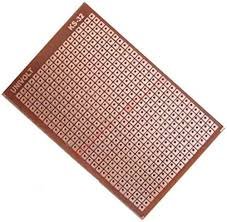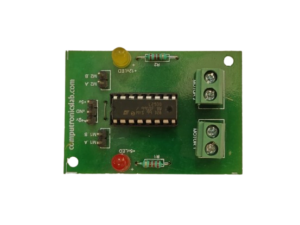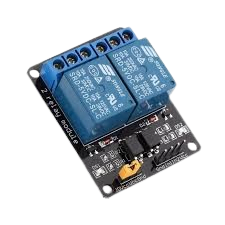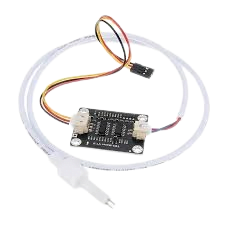PCB 6X4 (Pack of 2)
Out of stock
A 6×4 PCB is a printed circuit board measuring 6 inches by 4 inches. It provides a platform for mounting and connecting electronic components. Commonly used in DIY projects, consumer electronics, and industrial applications, it offers versatility and cost-effectiveness while accommodating various circuit designs and components.
₹56.62 ₹76.70 (Incl. GST)
Out of stock
PCB 6X4
Introduction
A PCB (Printed Circuit Board) 6×4 refers to a circuit board with dimensions of 6 inches by 4 inches. PCBs are fundamental components in electronic devices, providing a physical platform for mounting and interconnecting electronic components. The 6×4 size is a common and versatile format used in various applications, from DIY projects to professional electronics.
Features and Specifications
- Dimensions
- Size: A 6×4 PCB measures 6 inches in length and 4 inches in width. This size is suitable for a wide range of applications, offering enough space for various components and circuit designs while maintaining a compact form factor.
- Material
- Substrate: Typically made from materials like FR-4, a flame-retardant fiberglass laminate, or other materials like phenolic or polyimide. FR-4 is popular due to its durability and electrical insulation properties.
- Copper Layer: A thin layer of copper is applied to the board, which is then etched to create conductive paths for electrical signals.
- Layer Configuration
- Single-Sided: Most 6×4 PCBs are single-sided, meaning they have copper traces on one side only. This configuration is simpler and less expensive but limited in complexity.
- Double-Sided: Some 6×4 PCBs have copper traces on both sides, connected by plated-through holes. This allows for more complex circuit designs and higher component density.
- Surface Finish
- HASL (Hot Air Solder Leveling): A common finish that provides good solderability and corrosion resistance.
- ENIG (Electroless Nickel Immersion Gold): Offers superior performance and is often used for high-reliability applications.
- Hole Types and Sizes
- Through-Hole: Larger holes that allow components with leads to be inserted and soldered on both sides of the PCB.
- SMD (Surface-Mount Device): Smaller pads for mounting components directly onto the board’s surface.
Applications
- DIY Projects
- The 6×4 PCB size is ideal for hobbyists and engineers working on custom electronics projects, prototypes, and educational experiments. Its moderate size provides ample space for experimenting with different circuit designs.
- Consumer Electronics
- Used in various consumer electronic devices, including audio equipment, home appliances, and portable gadgets. The size allows for integration into compact, portable devices.
- Industrial Applications
- Employed in industrial equipment, control systems, and automation technology. The 6×4 size strikes a balance between size and functionality, making it suitable for many industrial applications.
- Prototyping and Testing
- Commonly used in prototyping and testing phases of electronic product development. The size and layout facilitate the creation of test circuits and experimental designs.
Advantages
- Versatility
- The 6×4 PCB size is versatile and adaptable, suitable for a wide range of applications and designs.
- Cost-Effective
- Provides a good balance between size and cost, making it an economical choice for many electronic projects.
- Ease of Use
- The moderate size is easy to handle and work with, whether for DIY projects, prototyping, or professional applications.
- Space Efficiency
- Offers sufficient space for various components and circuitry while remaining compact enough to fit in smaller electronic devices.
Conclusion
The 6×4 PCB is a practical and versatile choice for many electronic applications. Its size, material options, and layer configurations make it suitable for a wide range of projects, from hobbyist experiments to industrial applications. By selecting the appropriate PCB for your needs, you can achieve efficient and effective results in your electronic designs.
You may also like…
-
Industrial Services
Product Prototyping Service
Explore PCB Designing & Product Prototyping: from concept to creation, accelerate innovation with iterative designs, testing, and refining for market readiness.
We charge a modest consultation fee to ensure we can dedicate the necessary time and effort to thoroughly understand your project requirements.
SKU: Product Prototyping






